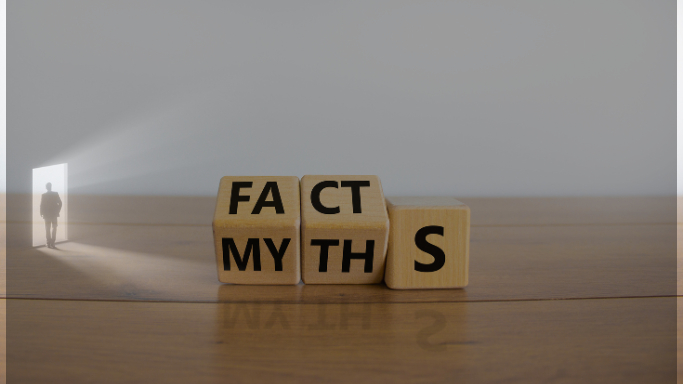How to find the right therapist and therapy
How to find a therapist can be trial and error. Half the battle is finding someone that you can relate to and that they can relate to you. Many people give up on ever going to a therapist again after their first session and lose faith in the process. Especially for men, even accepting that they might need help is a huge step. You might think you can sort it out yourself, but you wouldn’t do surgery on yourself so why should this be any different? After all, this is an injury you sustained as a kid and the sooner you get proper help, the sooner you can take control of your life again.

If you are a victim of sexual abuse, the Sexual Assault Referal Centre SARC provides free counseling and specialise in this area Sexual Assault Resource Centre (SARC) (healthywa.wa.gov.au)
Try and understand what therapy you might need. Most therapists generally only specialise in a couple of therapy modes. There are dozens of different modes of therapy. Some are specific to a disorder the therapist specialises in. There are some that have better efficacy for dealing with childhood abuse.
What kind of therapists are out there?
List of Services
-
PsychologistList Item 1
A psychologist can diagnose and provide psychotherapy to people experiencing psychological disturbances, behavioral problems, emotional difficulties, stress and related issues.
Cognitive behavioral therapy is the most common therapy modality amongst psychologists with many specialising in other therapies specific to their expertise.
The difference between a psychologist and clinical psychologist is that a clinical psychologist conducted a further 2 year post graduate in clinical psychology. They often have a greater scope in identifying, diagnosing and treating mental illnesses from mild to severe. This does not mean they have more ability to work with you. A general psychologist could well have greater intuition, experience and expertise in the area you want help in.
A psychologist cannot prescribe medications.
-
PsychiatristList Item 2
A psychiatrist is a medical doctor who has the ability to prescribe medications as well as diagnose and treat mental, emotional and behavioral conditions.
-
CounsellorList Item 3
Trained counsellors offer mostly talk-based therapies where you can build a healing and trusting relationship with. Often, we talk with friends and family members about our problems, but some of our issues can be too much for friends and family to deal with. This is where a trained and objective counsellor can help you to clarify your issues and explore options and strategies and provide self-awareness.
List of Services
-
PsychoanalystList Item 4
Stemming from Sigmund Freuds ‘Psychoanalysis’. The treatment of mental disorders through the understanding of a person’s Psyche through their unconsciousness and dream analysis.
-
Social worker
University trained allied health professionals that assist people in crisis. They can offer counselling, information and referrals to other services. Some Social Workers have additional training in Mental Health issues. They can assist you in getting the help you need.
-
General Practitioner GP
A GP is a medical doctor and often the first person you will see for a health concern. It is recommended you obtain a ‘Mental Health Treatment Plan’ if you plan to obtain psychological or psychiatric treatment for a Medicare rebate that will entitle you to 20 sessions with a Mental Health Practitioner.
It is further advisable to seek a GP that is trained in mental health care. It is always better to seek people with expertise.
What kind of psychological modes of therapy are available?
Here is a snapshot of some of the different psychological modes of therapy available.
There are dozens of other types of therapies available. It is about finding the one that works for you.
List of Services
-
CBT Cognitive Behavioral TherapyList Item 1
Almost all psychologists base their therapy on CBT. It has to do with a persons distorted thought processes which impact their behavior. Some of the main distorted thoughts are: Catastrophizing, Personalization and blame, Mind reading, Discounting the positives, Jumping to conclusions, Emotional reasoning (to name just a few). CBT can be beneficial in helping people modify their distorted thoughts. Evidence has shown that CBT is less effective for PTSD of childhood trauma.
-
EMDR Eye Movement Desensitization ReprocessingList Item 2
This therapy works by replicating your REM sleep which is one of the brains ways of organizing unconscious thoughts and is imperative to regulating your emotional stability. It is a way of filing the trauma away in its rightful place so it doesn’t need to be constantly relived. As many sufferers of PTSD will note when they relive the traumatic experience, they feel they are back there in the first person with all their senses. After EMDR they feel like they can see the trauma in the third person and without the intense emotional response. The therapist will get the patient to follow their finger (or light bar) as it moves side to side in front of their face a few feet away while prompting them to recount the trauma and allowing the brain to process the different images and thoughts as they come up. The great aspect about this therapy is that the patient does not need to verbalise the trauma but only recount the events as a memory. EMDR has a success rate of over 99% for a single traumatic event as an adult. The success of EMDR reduces significantly with childhood trauma for a variety of reasons, dissociation being one of them. However, EMDR used in conjunction with other therapies such as Neurofeedback has had great success.
-
NeurofeedbackList Item 3
For many sufferers of PTSD, it is less psychological and more biological and specifically neurological. Different areas of our brain controls mood, attention, emotions, sleep and of course, it can stimulate those stress hormones that put us in a state of fight, flight or freeze. Neurofeedback uses an electroencephalogram (EEG) to measure the electrical activity in the brain and then trains the brain activity through positive or negative neural feedback to become more efficient depending on what areas of the brain are over or under active. Neurofeedback can help improve attention, emotion, behaviors and sleep.
-
TMS Transcranial Magnetic Stimulation
It is similar to Neurofeedback except that it stimulates brain activity by using electromagnetic pulses.
-
Schema therapy
A mixture of CBT, psychanalysis, attachment theory and others. A schema is often a maladaptive coping mechanism developed when a child’s emotional needs are not met or response to trauma. There are 18 maladaptive schemas identified some of these are; a belief that others are not to be trusted or a belief that you will always be alone in this world or that you will always fail, belief that you are better than everyone else or that you must be perfect in everything you do. There are number of techniques a therapist will use to help you identify your childhood schemas and learn to make new positive adult ones. This therapy is often used for personality disorders or when other therapies have been unsuccessful. It has shown some benefits to PTSD.
List of Services
-
Somatic TherapyList Item 4
It encompasses any mind-body therapies. It identifies the close link the body has on the mind especially how the body hold the effects of trauma. It is not talk therapy but more of a body mind holistic approach. There are many types if Somatic therapies including Yoga, EMDR, Somatic experiencing which is the body’s reaction to trauma, sensorimotor therapy, neurosomatic therapy. Somatic therapies have shown to have some of the best benefits for childhood trauma victims.
-
IFS Internal Family Systems
Based on the idea that a person has many ‘parts’ or subpersonalities to themselves. This family of subpersonalities can often be in conflict with each other in your internal mental system. There are 3 common roles these parts play such as the ‘Managers’ that control feelings, emotions and tasks. ‘Exiles’ that hide away hurt, shame and guilt from previous experiences and ‘Firefighters’ that come into action when the exiles bring to the surface those hard to deal with emotions. Firefighters will do whatever it takes to suppress those emotions such as substance abuse or other unhelpful behaviors. IFS helps to acknowledge each of those family systems and help them to co-exist harmoniously. This therapy can provide a profound understanding of self while unburdening traumatic events of the past.
-
Prolonged exposure therapy
As the name suggests, the idea of Exposure therapy is to continually make the patient relive the traumatic event to desensitize their reactions. Exposure therapy can be beneficial for phobias, avoidance behaviors and fears. And, although some sufferers of PTSD have found this therapy to be beneficial, there are many that have had adverse responses. To continually subject your mind and body to that level of trauma and stress hormones when there are other highly successful evidence-based trauma focused therapies available is perhaps not worth the risk.
-
DBT Dialectical Behavioral Therapy
A form of CBT psychotherapy that helps manage a person’s extreme emotions and distress. Can be effective for borderline personality disorders. It helps in the skill of Mindfulness, Emotional regulation, distress tolerance and interpersonal effectiveness.
-
Mindfulness
One of the most effective forms of therapy you can do yourself especially for anxiety disorders including PTSD. It is about being aware of yourself in the ‘here and now’. Ultimately, it is about your 5 senses – what you can hear, see, touch, taste and smell. It is so simple and yet the most effective way to manage difficult emotions and situations. There are many techniques used and the more it is practiced, the easier it is to use in those times of extreme distress and the more effective it can be.
For more information, search the psychological society of Australia: https://psychology.org.au/find-a-psychologist
Do you know someone who would be interested in this resource? Feel free to share it.

You might also like these other resources:










